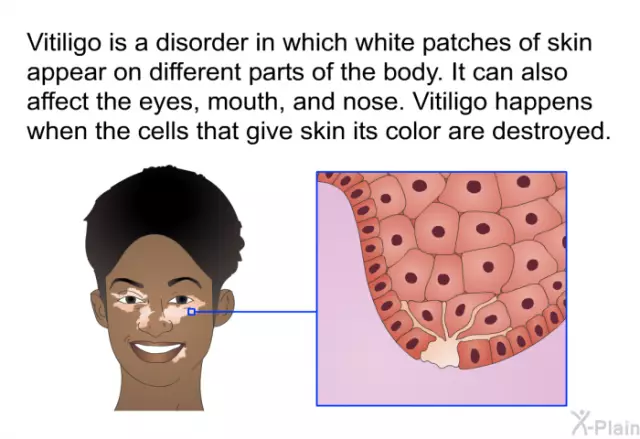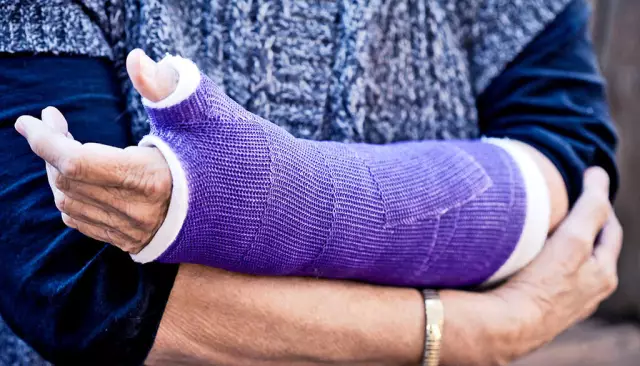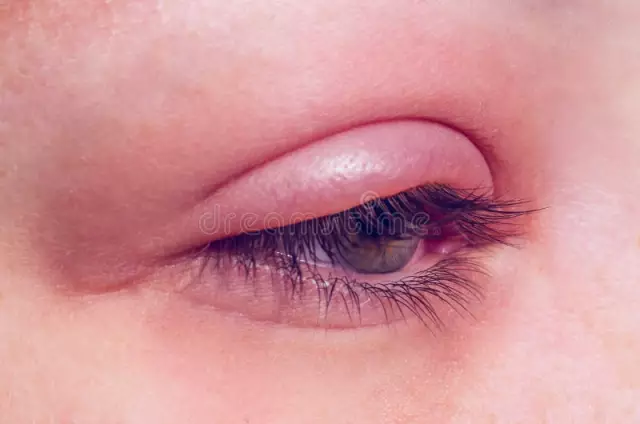- Author Rachel Wainwright [email protected].
- Public 2023-12-15 07:39.
- Last modified 2025-11-02 20:14.
7 misconceptions about vitiligo
Vitiligo is a disease in which certain areas of the skin completely lose their coloring pigment (melanin). As a result, milky white spots with pronounced edges appear that stand out clearly against the general background. According to statistics, vitiligo affects 1 to 2% of the world's population.

Source: depositphotos.com
The exact cause of the development of the disease has not yet been clarified. Apparently, this is precisely what served as the source of the spread of numerous misconceptions about the disease. We will try to debunk the most famous of these myths.
Vitiligo can be infected
This is not true. It was found that pathology is not transmitted from a sick person to a healthy one.
In children, vitiligo does not appear earlier than 9-10 years. About half of all cases begin before age 30. Most often, spots occur on the back of the hands, fingertips, elbows and knees, face, and in the axillary and groin areas. When the scalp is affected, the corresponding areas of the scalp also become discolored.
Vitiligo cannot be completely eliminated
The disease is treated, however, the achievement of a lasting effect is not guaranteed. In any case, this is a long and complicated process. To get rid of vitiligo, you can use:
- ultraviolet radiation of a certain intensity;
- taking vitamin complexes;
- phytopreparations (topically and internally);
- laser therapy;
- electrophoresis with zinc, iron and copper preparations;
- corticosteroids;
- cosmetic procedures (protective, masking, etc.);
- diet.
The doctor selects a set of therapeutic measures individually, taking into account the patient's condition, the presence of concomitant diseases and the intensity of skin lesions.
Drugs used to treat the disease are toxic
Most of the medicines used to treat vitiligo are made from plants. Most often these are extracts of St. John's wort, small duckweed, parsnip, wild strawberries, drupe psoralei, ammonia large, as well as juice from leaves and green fruits of figs and walnuts. None of the preparations contains highly toxic substances, although individual intolerance may occur in relation to some of them.
Vitiligo is purely cosmetic
Skin lesions that occur with vitiligo do not hurt, itch, or flake off. One might think that the patient is experiencing only cosmetic inconvenience, but, unfortunately, this is not entirely true. It is not for nothing that experts call vitiligo a skin marker of internal trouble. The appearance of discolored spots on the skin, as a rule, correlates with problems inside. Dysfunctions of the endocrine glands, organs of the gastrointestinal tract and liver, a decrease in the activity of the immune system are especially often observed. Therefore, at the first manifestations of vitiligo, you need to contact not only a dermatologist, but also a therapist in order to undergo a full examination.
The disease is inherited
This is not true. Doctors only talk about a hereditary tendency to ailment. For a child born into a family with vitiligo patients, the likelihood of developing the disease does indeed increase, but it does not necessarily materialize.
The characteristic features of vitiligo manifestations are not always inherited, although such cases are known. For example, sometimes doctors observe the same localization of discolored spots in several members of the same family.
Stains cause physical discomfort
Vitiligo spots do not cause unpleasant physical sensations. It is on this basis that you can quickly distinguish this ailment from dermatoses or psoriasis.
Vitiligo increases the risk of skin cancer
Vitiligo does not pose a direct threat to life, and the fear that the disease can become a precursor to malignant neoplasms of the skin is unfounded.
However, vitiligo must be treated. White spots not only indicate general ill health. Patients suffer greatly emotionally: they are characterized by low self-esteem, self-doubt. Often such people need the help of a psychotherapist so that they can establish contacts with others and socially realize themselves.
YouTube video related to the article:

Maria Kulkes Medical journalist About the author
Education: First Moscow State Medical University named after I. M. Sechenov, specialty "General Medicine".
Found a mistake in the text? Select it and press Ctrl + Enter.






